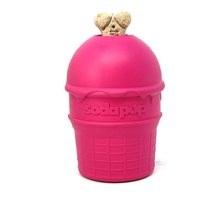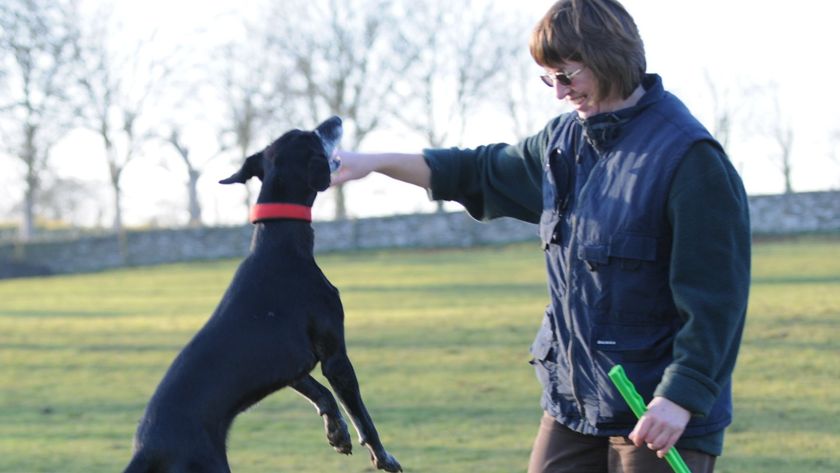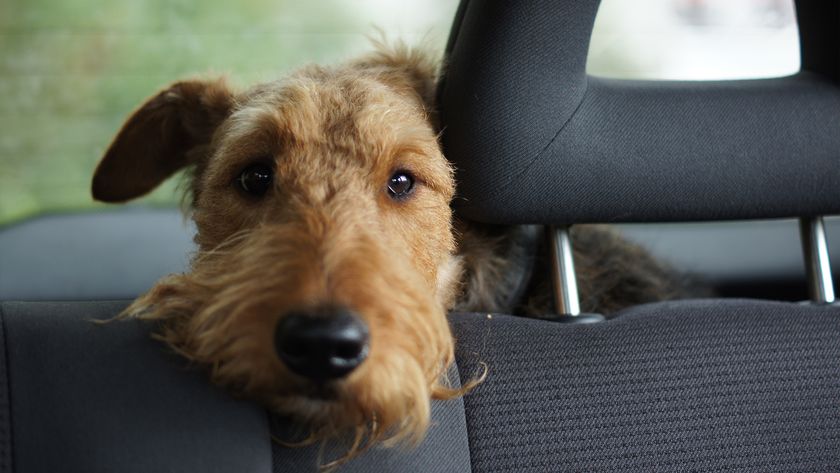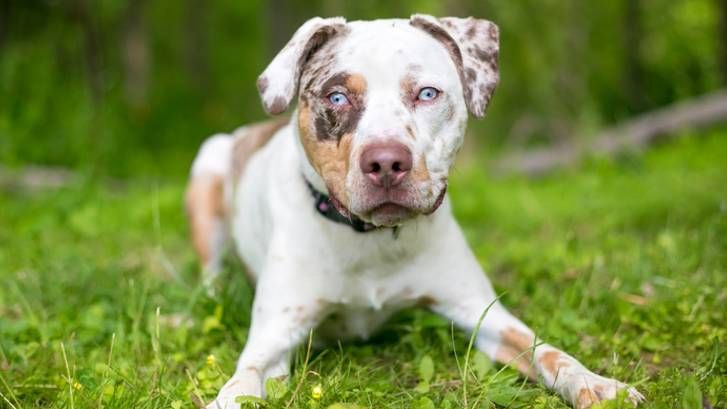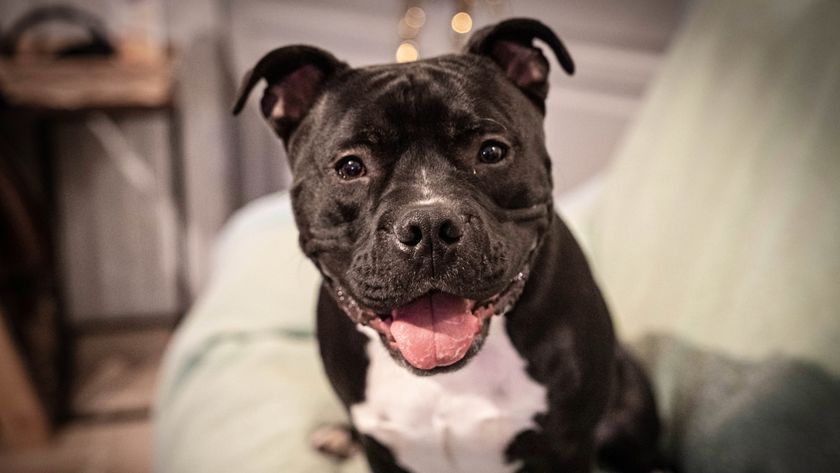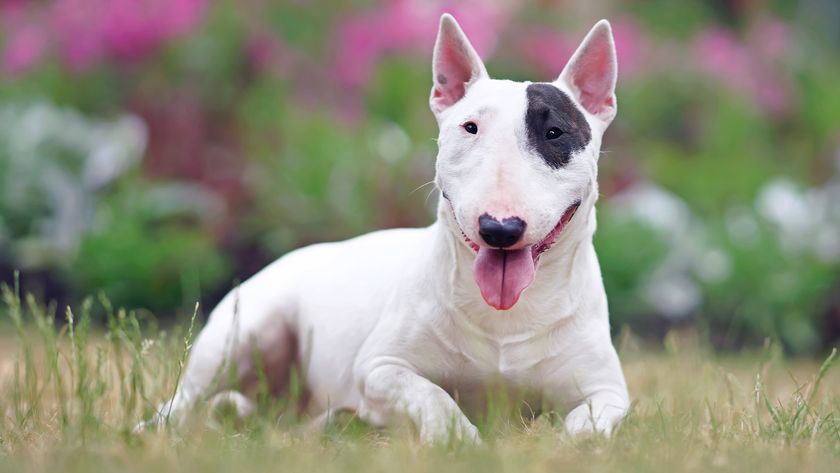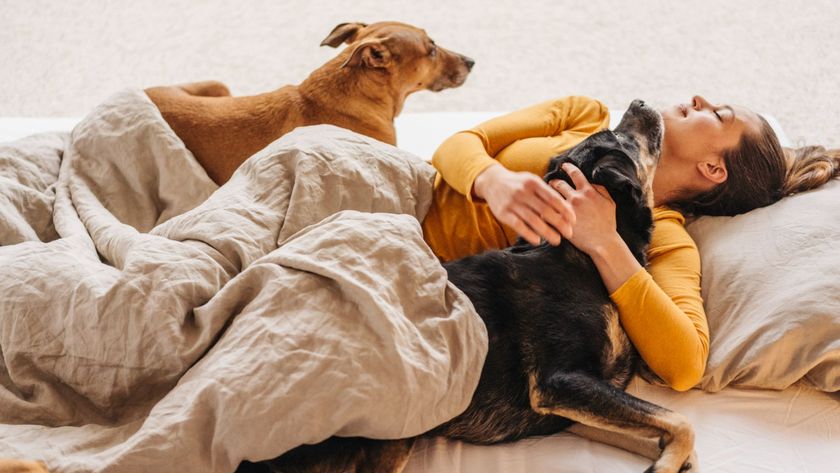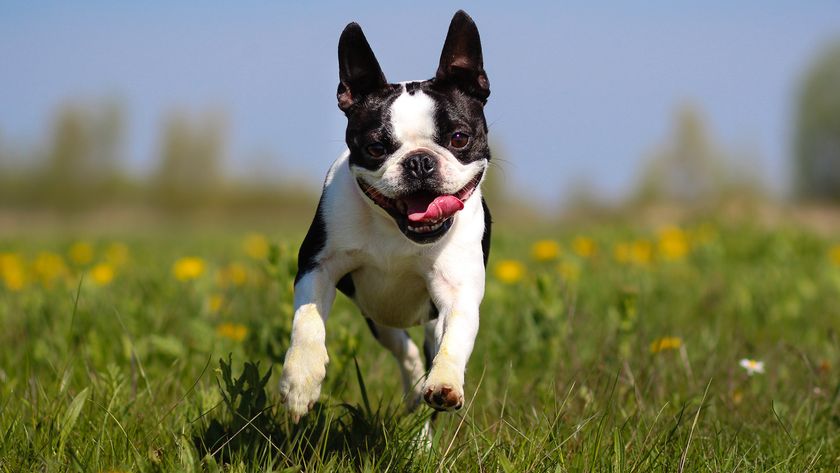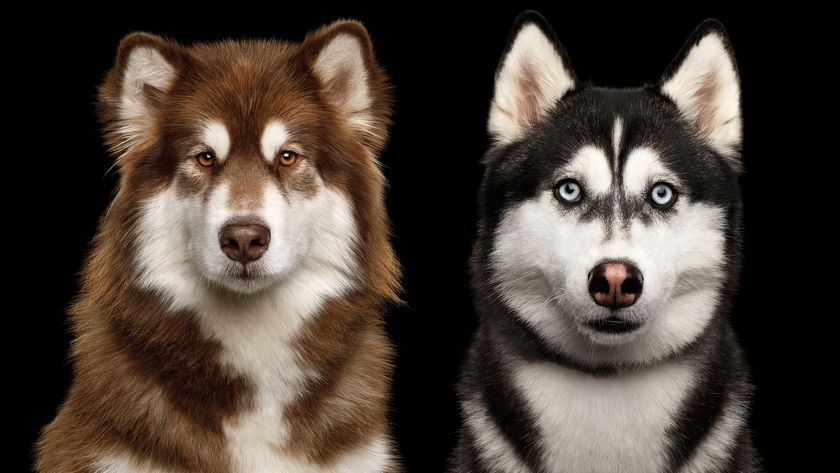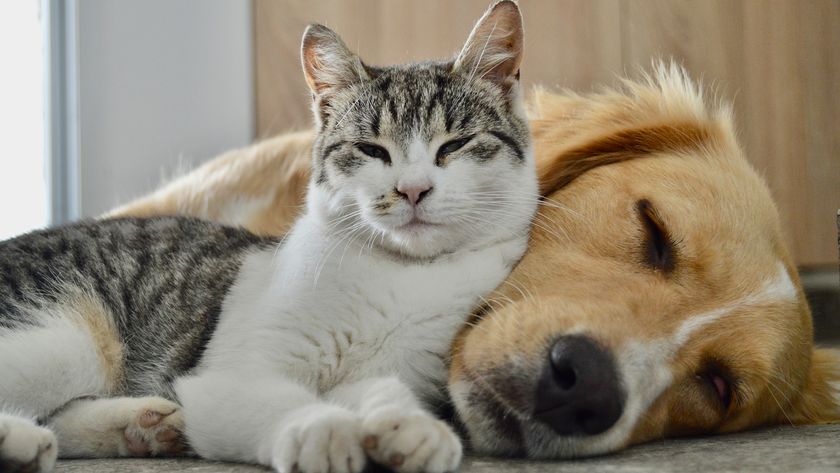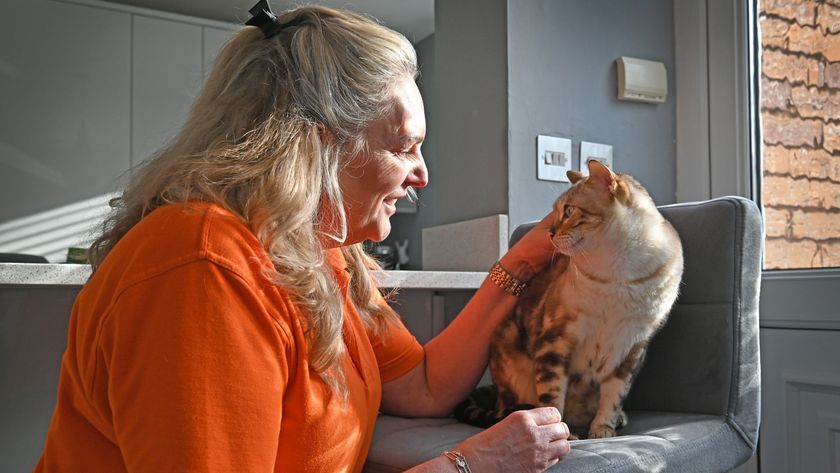Is your dog play barking? Here’s why, according to an expert
Want the lowdown on dog play barking? We explain why your pooch gets so noisy during play.
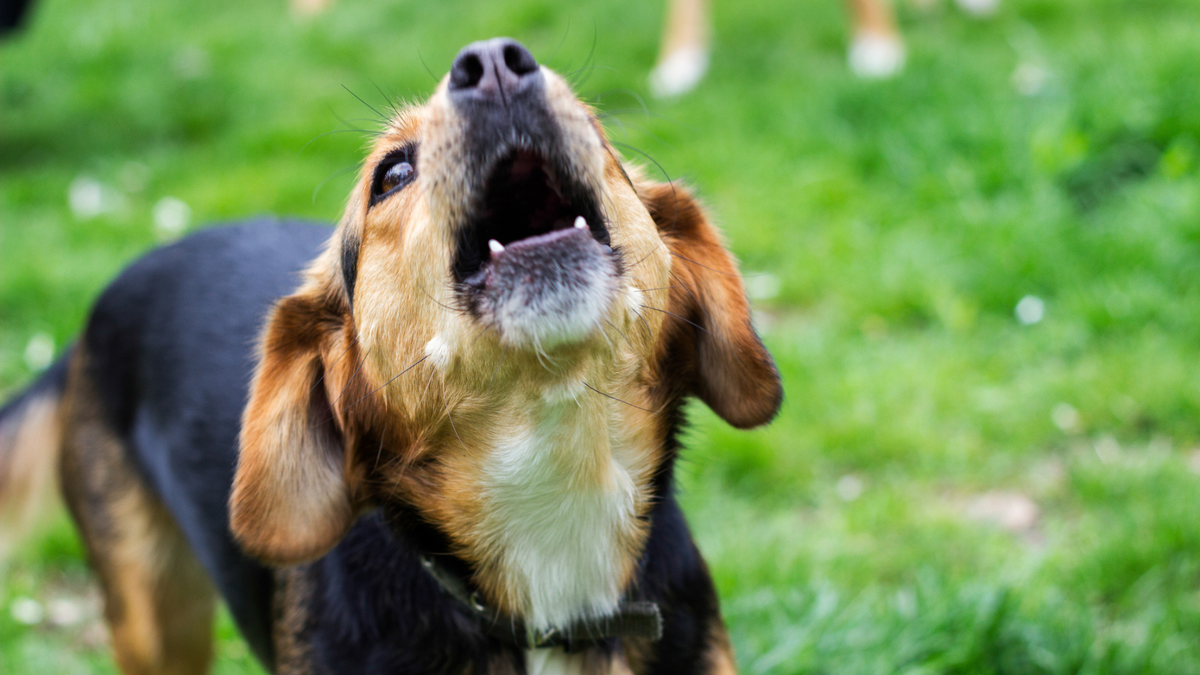
Dog play barking is such an interesting area of canine communication. You might question whether it shows happiness, frustration, or perhaps fear.
As a certified animal behaviorist who specializes in dogs, I've spent years observing, studying, and decoding the ways dogs communicate. The play bark is a fascinating one — a distinct form of vocalization that I’m here to explore with you.
Play is a pretty important part of a dog's life. Not only does it provide joy and entertainment, but it also improves social skills and mental regulation.
The play bark isn’t utilized by all dogs, in fact, many dogs will play silently their whole life. Breed traits, their level of arousal, and learnt behavior from other canine companions can all impact whether or not a dog play barks.
Play barks can be different in tone and pitch — you may hear growls as you play with the best dog toys or best puppy toys , or whimpers as they feel anticipation for the next part of the game. They might also bark as they grow in frustration or arousal.
Alongside scent and body language, vocalizations are a way for dogs to communicate their emotions and intentions. From signaling excitement to showing fear or frustration, the play bark serves as a versatile tool in a dog's communication code.
Read on to better understand the reasons why your dog might be barking at you during play, whether it’s something we should be looking to reduce, and how we can go about teaching our dogs new responses during play. If your dog won't stop barking in general, this vet's guide can help.
PetsRadar Newsletter
Get the best advice, tips and top tech for your beloved Pets
Why is my dog play barking?
If you’re looking for the best way to play with a dog, it’s important to understand the way they communicate during these interactions. Play barking is just one tool, alongside dog body language, that may help you understand how your dog is feeling during a game.
There are a number of reasons why your dog might bark during play with either other canines or their human companions. They may bark differently depending on the situation, the individual and the style of play. Let’s have a look at some of the reasons why your dog might be play barking.
1. Excitement
Dogs often bark when they're excited. During play, they might become so aroused that they can't contain that level of excitement, resulting in barking. One way to get rid of some of that emotional energy is by barking.
2. Communication
Dogs use barking as a form of communication, alongside scent and body language. A bark can be a way of expressing joy, inviting others to play, or signaling their intentions during the game. Despite it often looking like a hot mess, most games that dogs engage in have rules.
3. Boundary setting
During play, dogs might bark to establish boundaries. This can happen if they feel overwhelmed, or they want to communicate that they're not comfortable with a particular response from the human or dog they’re playing with.

This is an absolute classic when it comes to enrichment toys for dogs. We recently tested it for our best puppy toys guide and it’s still ranking as a winner. It's great for young puppies who need some soothing enrichment to help sore teeth and can be filled with all kinds of natural food for your dog to explore.
4. Pain
If play becomes too boisterous or the dog is forced to move their body in a particular way, a bark may indicate pain or discomfort. If your dog suddenly starts to bark during play when they haven’t done so before, it’s worth getting them checked out by your vet.
5. Frustration
Some dogs might bark when they're frustrated. It could be that they're unable to get what they want at a specific moment, causing them to feel annoyed. This frustration could be due to you being too slow to toss their toy or not being able to get a dog to play with them.
6. Attention seeking
Dogs do what works - and if barking at you gets you to respond to them in some way, it can become a pretty great strategy to implement. Dogs might bark during play as a way to seek attention. They might also do it to prolong a game they're really enjoying when you stop too soon.
7. Breed instincts
Certain breeds, particularly those with herding instincts, may bark during play as a way to control or direct the movements of other dogs or even humans. Play often provides an outlet for natural breed traits such as hunting, stalking, chasing, or grabbing.
Is it normal for dogs to bark and growl while playing?
Barking is a natural form of dog communication, a way to express their emotions and communicate desires. Understanding dog body language will help you to better understand what emotion is behind the bark.
While barking is a normal behavior, often displayed during dog play fighting, it’s important we understand when it’s used for fun or when it might be from aggression.
If you’re concerned about dog play biting too, this guide can help.

What does play barking sound like?
Dog play barking differs in sound to other types of barks. The tone and rhythm will be different to barks that might happen to alert us or to seek emotional support when the dog is anxious. When dogs engage in play, their barks are typically higher-pitched and may be repetitive sounds - more rhythmic compared to other types of barks.
Unlike warning barks or barks indicating fear or aggression, play barking lacks intensity and tension. You may hear pauses in their barking as they request a type of playful interaction and then wait for either you or the other dog to respond.
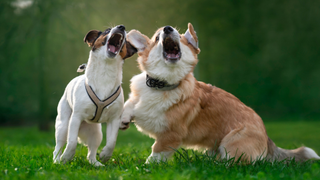
How to reduce barking during play
Attempts to reduce play barking need to focus on promoting calm and focused interactions. It can be useful to help your dog to regulate their emotions and learn that arousing situations can be swapped out for more calming activities positively.
If your dog tends to get over-aroused quickly during play, initiate it when they're most relaxed and keep sessions nice and short. Work on teaching an interrupter cue using positive reinforcement for dogs.
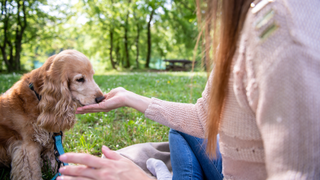
Out of the playful context, you could say a word such as “pause” or “stop” then drop some treats onto the floor for your dog to sniff out and enjoy. After repetitions, they learn that when they hear that new cue, it’s a signal that food is about to fall from the sky.
Once they’ve grasped this lesson, then you can introduce it firstly during the initial (less-arousing) first minute or two of playtime as a way to say that the game has ended for now.
Want more tips to help your dog’s behavior? If your dog is possessive over toys , we’ve got the answers. And if you’re looking for the best durable dog toys, we’ve collated seven of our favorites.
The SodaPup Ice Cream Cone Treat Dispenser Dog Toy
This was voted as the 'best for chewers' in our best durable dog toys guide. It's perfect for some summer fun and enrichment to tire your dogs out when it’s too hot to take long walks. It's made from non-toxic, pet safe, food safe natural rubber, and is the perfect toy to let your dog have some food with food!

Caroline Wilkinson is a Certified Animal Behaviorist. She is a Full (assessed) Member of the APDT and INTODogs – as well as a Registered Training Instructor (ABTC). Caroline is also a Certified Real Dog Yoga Practitioner and an Applied Canine Zoopharmacognosist.

